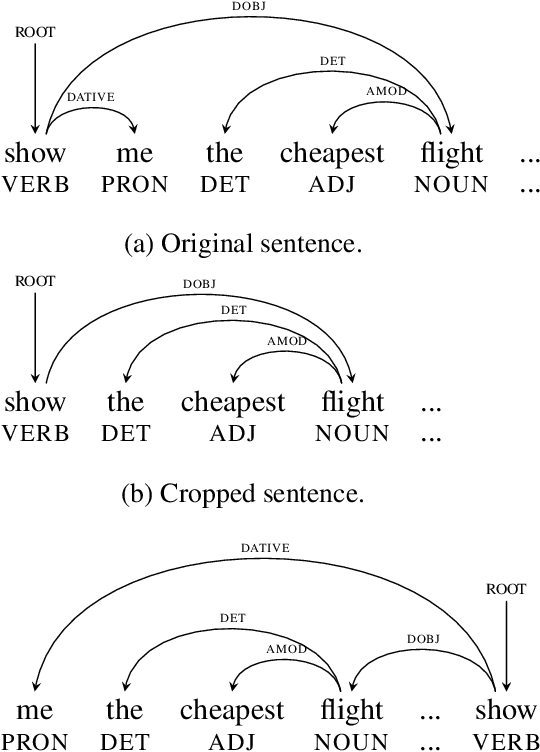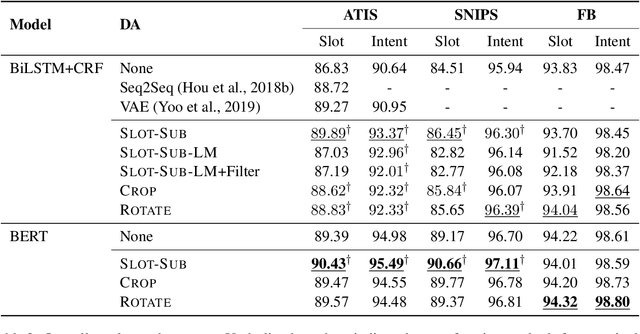Simple is Better! Lightweight Data Augmentation for Low Resource Slot Filling and Intent Classification
Paper and Code
Sep 08, 2020



Neural-based models have achieved outstanding performance on slot filling and intent classification, when fairly large in-domain training data are available. However, as new domains are frequently added, creating sizeable data is expensive. We show that lightweight augmentation, a set of augmentation methods involving word span and sentence level operations, alleviates data scarcity problems. Our experiments on limited data settings show that lightweight augmentation yields significant performance improvement on slot filling on the ATIS and SNIPS datasets, and achieves competitive performance with respect to more complex, state-of-the-art, augmentation approaches. Furthermore, lightweight augmentation is also beneficial when combined with pre-trained LM-based models, as it improves BERT-based joint intent and slot filling models.
 Add to Chrome
Add to Chrome Add to Firefox
Add to Firefox Add to Edge
Add to Edge